
|

|

|

|

|
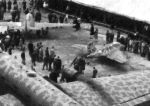
|

|
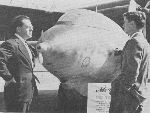
|
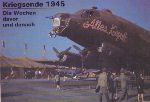
|
Concise history from Phil Butler's "War Prizes":
FE500/T-2-500 Messerschmitt Me 163B-1 WNr 191301
It is possible that this Me 163B was the example air-freighted from Europe to the USA aboard a Douglas C-54, immediatly after handover to Col. Watson. After arriving at Freeman Field and being refurbished there, this aircraft was airfreighted to Muroc (now known as Edwards Air Force Base), California, in a Fairchild C-82 Packet on the 12th April 1946.
The first attempted flight trial was made on 3rd May 1946, in the presence of Dr. A. Lippisch, the designer of the aircraft, but this was not succesful because the tow rope from the towing Boeing B-29 was accidentally released. The Me 163 was towed to altitude by a Boeing B-29 and then released at 30-35,000 feet for a gliding descent. These trials were mostly flown by Gustav E. Lundquist who had previously, been a test pilot at Wright Field. Some details of the tests are given in a series of reports, reference F-IM-112-ND.
Although rocket fuel was obtained to enable powered flights to be made, flying trials were abandoned when delamination of the wooden wing structure was found. The '163 then went to Norton AFB, Ca, where it was stored until being transferred to Silver Hill in 1954. After years of storage, this aircraft is now on display with the National Air and Space Museum at the Silver Hill facility.
Komet 191301 was displayed in what appears to be near-original condition at the 'Army Air Forces Fair' at Wright Field Air, held between 13 and 21 October 1945. Some sources report this display was held in 1946, but that is not correct. It would also conflict with the subsequent test flying as FE500/T-2-500. The pictures below show the Komet parked in between an Me 262 (FE-111), a FW 190 and a Ju 290 transport. See the Bud Andersonís Historic Aircraft Photo Collection for a great aerial view of the 'enemy aircraft display' area. Flickr has a great photostream, including this great map of the show: Army Air Forces Fair, Wright Field, Dayton, Ohio, Oct. 1945 from the SDASM Archives.
Most of the unique pictures shown below were kindly provided by Richard T. Eger, Me 262 historian and researcher. Two more were sent by Joe Grasela, including the color photo of the Ju 290.

|

|

|

|

|

|

|

|

|
In 2014, the San Diego Air and Space Museum Archive put a color photo by Jack Canary on Flickr, showing 191301 for the first time in color (the picture's link redirects to the Flickr website).

|
In 2017, the 'Rovingbits' website published a fantastic color photo report of the 1947 WPAFB airshow (I think it should be 1945, see above). It shows 191301 in even greater detail. The picture's link redirects to the Rovingbits website.

|
Either just before or after the fair the Komet was also photographed alone on an apron, with in the background the tents seen in the pictures above.

|

|

|
This picture shows 191301 still in its original colors, but now largely dismantled. Location is not known, but it could be Freeman Field.

|
Test pilot was Major Gustav Lundquist (his USAF biography can be found here), the B-29 was flown by Major Robert Cardenas. Project leader was flight test engineer Major Nathan Rosengarten, who held a very responsible position at Wright-Patterson.
The project was hampered by several technical problems. The landing gear formed a major obstacle, since no-one knew how it worked exactly, and it wouldn't function properly. Inspection by Dr. Lippisch revealed that the wing had delaminated, and they were replaced by those from FE495. Interestingly, this was a much older Komet from the first batch of 70, that apparently had a better build quality. Another problems was play in the control system.
The details of the flight test program are a bit vague. The first attempt to test fly the Komet was made on 3 or 4 May 1946. The sources below differ about the date, but since the 3rd was a Friday and the tests were continued the next day, 3 May 1946 appears the more likely date. Unfortunately, the tow cable was inadvertently released at approximately take-off speed, but the Komet was safely brought to a stop after a very long roll-out (estimated at 'a couple of miles'). Another flight was planned for the next day, but abandoned due to landing gear problems. A successful flight is reported to have taken place 'later that month'. Pilot Lundquist descibed the towed flight(s) as harrowing because of the wake turbulence of the B-29, but reports several a few gliding flights to have been made. Further details are lacking.
Many pictures are known from this period, and they shows the aircraft painted as both 'FE500' (Foreign Equipment number 500) and 'T-2-500', presumably in this order. This close-up of all three markings on the preserved aircraft does not confirm the order, unfortunately. Note that in the past the overlapping markings led to the false idea that the tail of V56 (WNr 310065) had been used on 'T-2-500', since it appeared that a large white tail number '56' could be seen. Judging from the photos below, the actual test flying was performed with the 'T-2-500' markings applied. More research has to be done here.
Some photos of 'FE500' are shown here. 'FE500' is stencil-painted in the standard Air Force font. The glass armor plate is present, whereas it it absent in 'T-2-500'. Judging from the location of the apron expansion joints, the photos were made on at least two occasions.

|

|
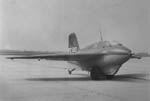
|

|
A few photos of 'T-2-500' exist. The glass armor plate has been removed. That suggests the aircraft was lightened for the test flights. A possiblity is that the rocket engine was removed, and items ahead of the CG were removed to restore the center of gravity. The combination of attached dolly and fully extended skid is something not seen during German operations, and possibly a sign of the technical troubles with the landing skid.
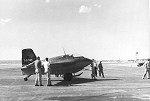
|
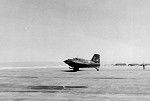
|
One photo of 'T-2-500' is presented here in much greater detail, courtesy of Joe Grasela. The aircraft shows a totally different camouflage compared to the Wright Field Air Fair photos. But I find it quite amazing that the aircraft was repainted so meticulously in a sort-of German-style mottle camouflage, with accurate Balkenkreuze, swastika and T-Stoff and C-Stoff markings. Note that the swastika was a white-outline only version (as per 1944 rules) on 191301, but black-filled on FE500. The upper wing Balkenkreuz has a black-filled cross, and very possibly a black outline. That also doesn't comply with 1944 regulations, but the Australian Komet shows the same model Balkenkreuz, so that could have been a correct repainting. A possible explanation for the accuracy is that the markings still could be seen as raised areas after the camouflage repaint. But that doesn't explain why this trouble was taken. The 'T-2-500' marking is definitely hand-painted, as opposed to stencil-painted 'FE-500'. No trace of the overpainted 'FE500' markings can be seen on the tail, and therefore doesn't make clear what the order of these markings was. Noteworthy is the absent glass armor plate. It appears that the tow cable is connected, and if that's correct, it seems that a thin electrical cable connects to the tow cable. A close-up photo of the plane shows an electric connector, likely for radio communication with the towing B-29.

|
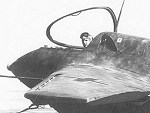
|
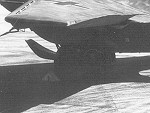
|

|
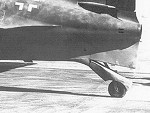
|
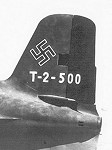
|
Note that a fake 'FE500' also existed. See the White 42 page for more details.
Bill Zemanek located a number of documents relating to the test flying in the Edwards AFB History Office, and kindly supplied them for this website. The documents are shown chronologically.
Shown first is a press release dated 7 May 1946, issued by the Wright Field Public Relations Office.
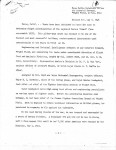
|
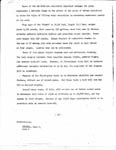
|
Next is a 'Record and routing sheet' by Colonel Boyd to Colonel Putt, dated 8 May 1946.

|

|
Third shown is 'Interim report No. 1 on Me 163' with number F-IM-112A-ND. This report was prepared on 14 May 1946, which appears to be in the middle of the flight test program. It appears there is a date error on the last page: it talks about 4 April 1945 but it seems it should be 1946 to line up with the other dates. Also, the Appendix doesn't list the Wright Field Air Fair, and the event is even a bit difficult to fit in.
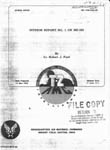
|
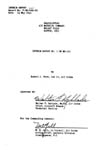
|

|

|
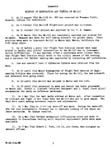
|
Fourth is a fairly recent and probably unofficial report by Nathan Rosengarten, project officer of the Komet flight test program.
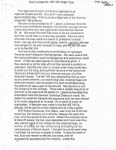
|
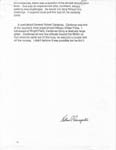
|
The last document is a 16 March 1999 letter by the Air Force Flight Test Center to the American Aviation Historical Society.
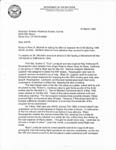
|
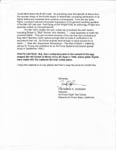
|
The original colors of 191301 are very difficult to determine, with only black and white photos available for study. I would think they are comparable to those of the Australian example, although that Komet's camouflage pattern is rather different. The colors used in the repainting are largely preserved on the unrestored NASM example, but no study of these colors is known to me. US decal makers Aeromaster report 'possibly Medium Green over a locally mixed Blue Gray'. Judging from the total lack of German stencils on the lower fuselage, it appears the aircraft was completely overpainted. A puzzling aspect is whether the camouflage was changed before it went into storage. Current photos of the NASM aircraft appear to show lighter colors than the Muroc test flying photos. The very 'busy' mottle pattern visible in the 1946 photos is difficult to recognise in the heavily weathered paint scheme.
Through James West of the extensive Indiana Military Organization web site, the following possible interesting sources were identified:
James West sells two CD's on his site, one that contains the entire collection of the weekly newspaper 'Twingine Time' published at Freeman Field, and a CD containing a 1,500 page 'Freeman official Army history'. James was kind enough to check for Komet content, but there is no mention of the enemy aircraft on either of them. Both end with the end of the Flight Training Center and before it became the Evaluation Center.
For the continuation of the history of this aircraft, see the National Air and Space Museum page.